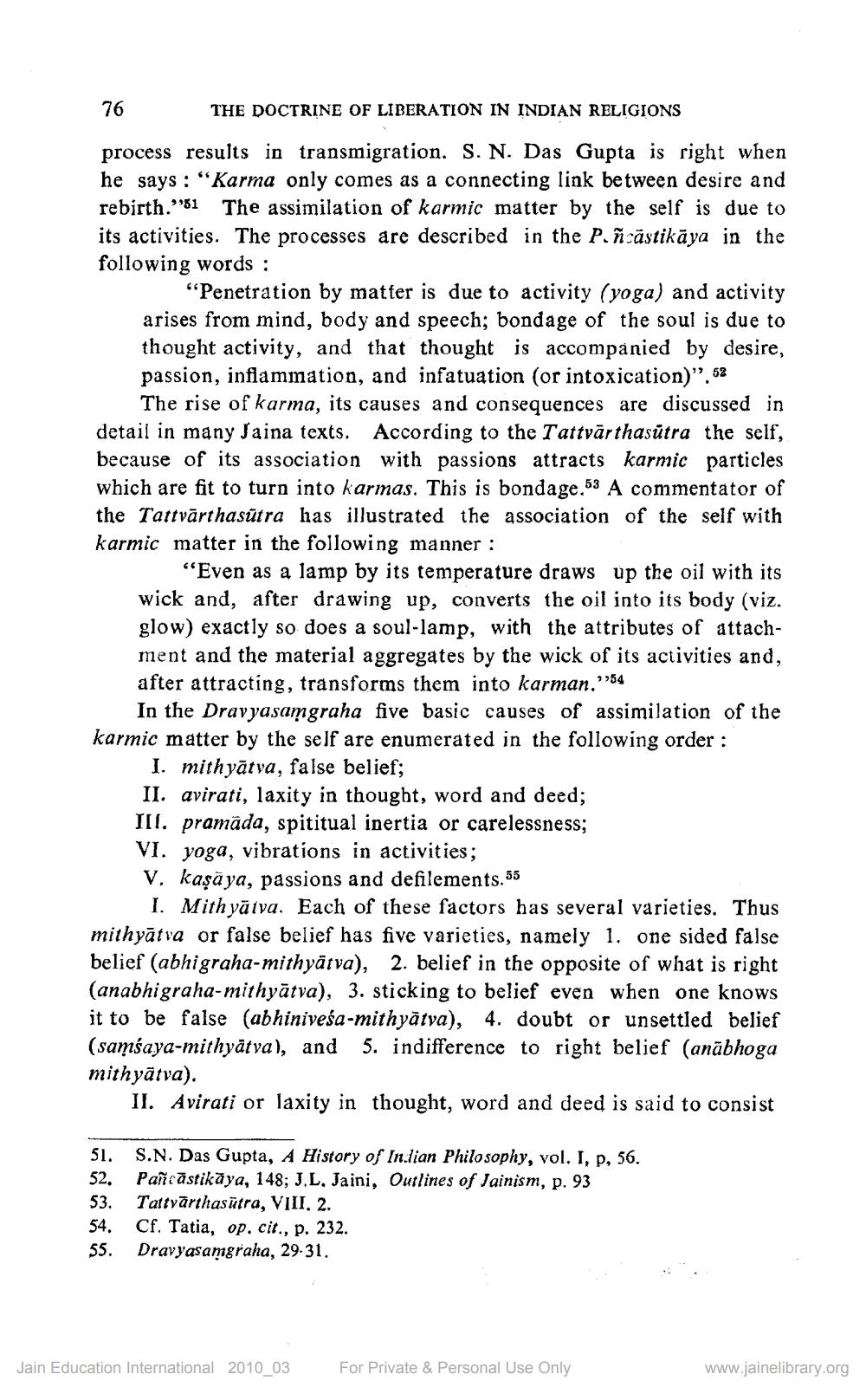________________
76
THE DOCTRINE OF LIBERATION IN INDIAN RELIGIONS
process results in transmigration. S. N. Das Gupta is right when he says: “Karma only comes as a connecting link between desire and rebirth."'81 The assimilation of karmic matter by the self is due to its activities. The processes are described in the P. ñcāstikāya in the following words :
"Penetration by matter is due to activity (yoga) and activity arises from mind, body and speech; bondage of the soul is due to thought activity, and that thought is accompanied by desire, passion, inflammation, and infatuation (or intoxication)". 52
The rise of karma, its causes and consequences are discussed in detail in many Jaina texts. According to the Tattvārthasütra the self, because of its association with passions attracts karmic particles which are fit to turn into karmas. This is bondage.53 A commentator of the Tattvārthasütra has illustrated the association of the self with karmic matter in the following manner :
"Even as a lamp by its temperature draws up the oil with its wick and, after drawing up, converts the oil into its body (viz. glow) exactly so does a soul-lamp, with the attributes of attachment and the material aggregates by the wick of its activities and, after attracting, transforms them into karman.'»84
In the Dravyasamgraha five basic causes of assimilation of the karmic matter by the self are enumerated in the following order :
I. mithyātva, false belief; II. avirati, laxity in thought, word and deed; II. pramäda, spititual inertia or carelessness; VI. yoga, vibrations in activities; V. kaşāya, passions and defilements.55
I. Mith yātva. Each of these factors has several varieties. Thus mithyātva or false belief has five varieties, namely 1. one sided false belief (abhigraha-mithyārva), 2. belief in the opposite of what is right (anabhigraha-mithyātva), 3. sticking to belief even when one knows it to be false (abhiniveśa-mithyātva), 4. doubt or unsettled belief (samśaya-mithyātva), and 5. indifference to right belief (anābhoga mithyātva).
II. Avirati or laxity in thought, word and deed is said to consist
51. 52. 53. 54. 55.
S.N. Das Gupta, A History of In.lian Philosophy, vol. I, p. 56. Pañcāstikāya, 148; J.L. Jaini, Outlines of Jainism, p. 93 Tattvārthasūtra, VIII. 2. Cf. Tatia, op. cit., p. 232. Dravyasamgraha, 29.31.
Jain Education International 2010_03
For Private & Personal Use Only
www.jainelibrary.org




